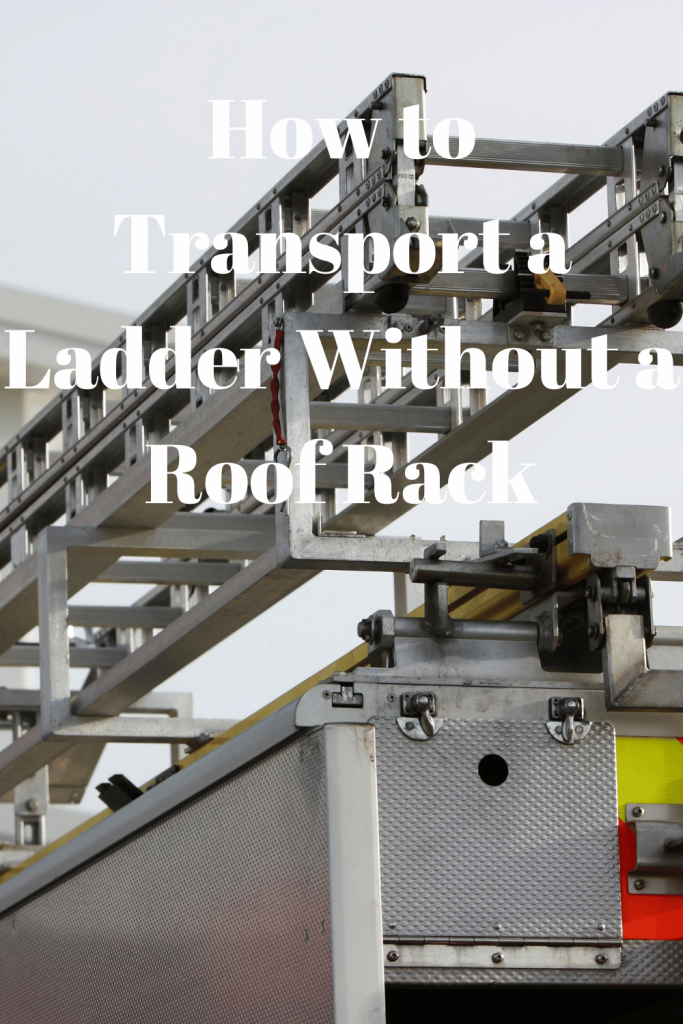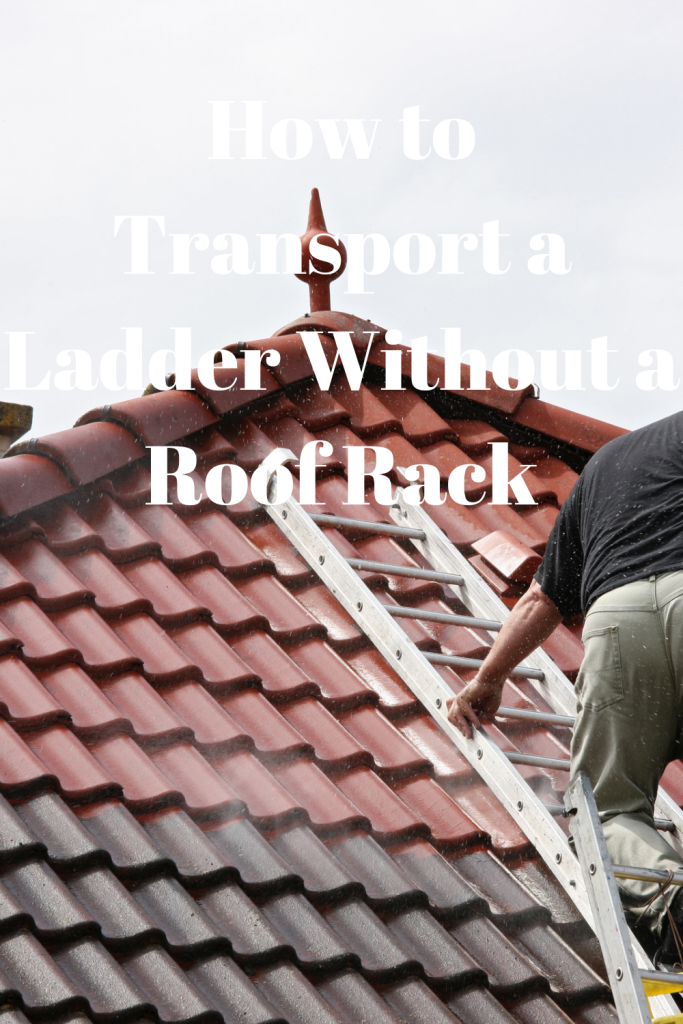
How to Transport a Ladder Without a Roof Rack
Transporting a ladder can be challenging or even dangerous without proper equipment, and this article offers advice and recommendations for safely transporting ladders in vehicles without roof racks.
First, ensure the ladder will fit inside of your vehicle’s trunk or cargo area. If possible, test drive the ladder to ensure it doesn’t shift or risk of coming loose while driving.
Secure the Ladder Inside or on Top of Your Vehicle
Transporting a ladder without using a roof rack requires taking precautions and securing it correctly to prevent shifting during transport. This guide provides steps on how to do so safely and effectively for incident-free journey to your destination. Also be sure that the ladder meets all safety regulations as it should be folded, secured and locked before driving it.
If your ladder is small enough and disassembled, you may be able to transport it inside your vehicle. To do so, fold down or remove the rear seats as necessary before making sure the ladder can fit through any openings in the space available; secure it using straps or bungee cords so as to prevent movement during transit.

Or you could transport the ladder on top of your vehicle using either a cargo carrier or hitch mount, attaching it securely with straps and hooks compatible with your car, truck, van, SUV and purchasing or renting them separately if possible. In either instance, be mindful to abide by local regulations regarding overhang.
Before securing the ladder to your vehicle, it is recommended that you clean out its interior and lay out protective padding or blankets to minimize risk of damage to either. Once the ladder has been carefully placed in its desired spot, slowly tighten its straps or tie-downs until all slack is gone and ensure a firm grip is achieved on it.
Once your ladder is securely fastened, it is advisable to give it a shake to ensure its stability during transportation. If necessary, tighten any straps or tie-downs using either the ratchet mechanism or manually pulling them firmly if necessary; additionally, consider crossing straps or bungee cords over its entirety in an “X” pattern for added support and added stability.
Check the Stability of the Ladder
Though transporting a ladder without roof rack may be possible, you must still take special care to ensure its security. Properly securing it can prevent it from shifting during transit and protect the interior of your vehicle from damage. A variety of materials are available for tying down ladders – rope, straps and bungee cords may all do just fine – plus ladder clamps with locking holders or even ratchet straps may help secure it further.
Transporting ladders upright is preferable, but if that isn’t an option you can also lay them flat. When using bungee cords or straps to transport, ensure they are tightly tied down without creating too much pressure on your car’s windows and ensure your ladder isn’t pulled too hard, as doing so could cause it to shift during transport and collapse completely.
If using a ratchet strap, attach one end securely to your vehicle or ladder rack before pulling tight over the ladder and tightening ratchet until no movement exists in strap. Be wary not to over-tighten as this could damage both your ladder and vehicle interior.

Once your ladder is secured, give it a test drive to make sure that it remains steady during transit. Sit in the driver’s seat and ensure that its visibility doesn’t obstruct or make operating your vehicle difficult; if using bungee cords to secure it in an “X” pattern for additional stability.
If you’re uncertain whether your vehicle can safely transport a ladder, consult its owner manual for its maximum payload capacity and take into account any passengers or equipment you might be transporting, which could affect its ability to haul such items safely. If that proves insufficient, an alternative would be using a utility trailer; just ensure that all local and state laws regarding its usage when hauling larger objects.
Test Drive the Ladder
Transporting ladders safely requires proper securement – both inside and on top of your vehicle – in order to keep it from shifting during transit, protecting both it and yourself from potential damages.

To transport a ladder safely in your vehicle, place it in the trunk or backseat and secure it using bungee cords, ropes or straps. For optimal transport results, try transporting it upright to take up less space – doing this will also allow for improved visibility out of rear windows and mirrors when driving your vehicle.
If you’re transporting your ladder on top of your vehicle, use ratchet straps or tie-downs as the most secure means of securing it in place. They are purpose built for this use and more durable as a result – meaning less wear and tear for you!
Once the ladder is secured, test its stability by giving a gentle shake. If any movement occurs or shifts occur, stop your vehicle immediately and re-secure the ladder as soon as possible. Testing it first will help ensure it’s safe to travel on.
Before placing the ladder against your vehicle roof or front end, be sure to ensure it doesn’t stick out too far from it and block your visibility on the road. A ladder that protrudes too much could potentially cause damage or reduce visibility for other drivers on the road.
Once your ladder is secure, it’s time to hit the road! Be sure to drive with caution at an appropriate speed. Avoid sudden maneuvers and be mindful of low clearances and other vehicles on the road; additionally check for any shifting or loosening during transit – this way you can transport your ladder without resorting to roof racks while staying safe!
Inspect the Ladder for Damage
Before using a ladder, it is vitally important to conduct a comprehensive inspection for any signs of damage or wear-and-tear. If found, any damaged ladder should be immediately taken out of service until repaired or recycled as soon as possible. In addition, stability tests should also be completed in order to guarantee safe climbing on it.
Ladder inspections are essential in maintaining workplace safety and avoiding injuries, so they should be conducted by an appropriately qualified individual prior to each use. Records should also be kept of these inspections for future reference. When transporting ladders, make sure that they are safe as it poses no threat to either the vehicle or any passengers onboard.
No matter where the ladder is stored in your car, it must be secured against shifting during transit. Use of straps, tie-downs or bungee cords may help ensure its security during transport; additionally it is wise to frequently inspect its stability while travelling and secure or resecure as necessary.
As part of securing your ladder to your vehicle, it is advisable to place padding between its roof and the ladder – this protects its paint job while also limiting any unintended movement during transit.
Next, measure the interior space of the pickup truck bed as well as any passenger or cargo areas impacted by a ladder. After taking measurements, collapsible ladders should be made manageable and secured within its bed to avoid interference or potential safety risks.
Note the maximum load capacity of your truck and compare this against the weight of the ladder, to avoid overloading. Doing this may prevent your ladder from overstretching itself and becoming dangerous to both yourself and anyone in the vehicle.
Before placing the ladder inside of your pickup truck, it is highly advised to first clean and vacuum out the interior thoroughly in order to reduce any unwanted debris from becoming lodged on either your ladder or inside of the vehicle during transit – this will not only maintain cleanliness in your ride but will also enhance fuel economy and save on costs.
